Renault Clio 2 1998 - 2009 - USED, ENGINES, FAULTS
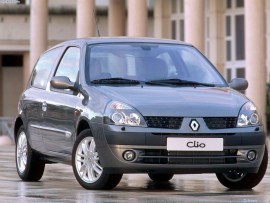
Renault Clio 2
The Renault Clio 2 is a fairly reliable small car, and maintenance and repairs aren't too expensive either, especially on the smaller models. The weakest points Renault Clio 2's are suspension, electronics and brakes, so check well before buying, as the mechanics are generally not perishable. Choose Renault Clio 2 after 2001, because much has been improved.
COMFORT - Renault Clio 2
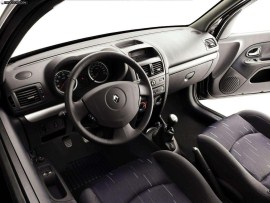
Renault Clio 2
The Renault Clio 2 is one of the better supermini in the half market, and if you love it at first glance, you'll agree to a few compromises.
The interior of the Renault Clio 2 is quite solid, but if you are a little taller than the average you will have a lot of trouble settling in, and the fact that the steering wheel only adjusts in height will make things difficult. The seats are too tight for many, so they say the ride is not comfortable at all. The good thing about offsetting some of these problems is the soft suspension that absorbs holes and bumps along the way.
This, of course, results in greater bends in the curves with the exception of the Renault Sport 172 racing variants whose settings have been completely changed.
Renault Clio 2 experience engines
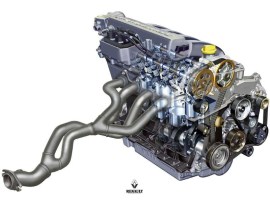
Renault Clio 2
Of the petrol in the Renault Clio 2, there are small 1.2 L and 1.4 L, similar performance, with an average consumption of about 6 liters of unleaded gasoline and slightly higher 1.6L. In our opinion, the best choice when it comes to gasoline engines is the 1.2L 16V and 75 hp, which is quite enough for a small Frenchman.
Let's start with the smallest engine, 1.2 liters and 60 hp, with only 8 valves and one camshaft. At first glance, it is not exactly a state-of-the-art unit, nevertheless the unit runs smoothly, costs little, is easy to maintain and is very grateful to be serviced regularly. It goes beyond great mileage without any problems, and is quite resilient and not too noisy when forced into high rpm. With this engine, the Renault Clio accelerates to 15 in 158 seconds and achieves a top speed of XNUMX km / h, just enough for moderate driving.
For high-speed averages, it's enough to opt for the 1.2-liter, 16-horsepower 75-hp valve, which accelerates to 13 in 5,9 seconds, and always has sufficient power reserves, even when the car is loaded. It consumes moderately, on average, about 7,8 liters, in the city about 1.4 liters. If you want a fast ride then a 98 liter engine and as much as 10,5 hp is the right choice for you. Unless a 185 s acceleration is convincing enough, as is a top speed of 1.6 km / h. For those more demanding Renault also offers versions of 110 liters and 2.0 hp, as well as 172 liter sports engine of 3.0 hp, and the pearl of the house is certainly Renault Clio 6 V255 with 5,8 hp and acceleration from 100 s to XNUMX km / h.
Given its small volume of 1,2 liters, gasoline has proven to be a cost-effective solution both in consumption and in maintenance and registration.
As for diesel, the old 1.9L pump-injected pump was initially installed, but since April 2001 common rail 1.5 dci engines have been introduced, which are for every recommendation. Very quiet and frugal, many times better than its predecessors.
Diesel engineers, the dream of most buyers in Serbia, have a slightly higher price, our market is the most interesting new common-rail engine of 1.5 liters with 65 hp (in the lower) and 80 hp in the stronger variant. Consumption of just 4,3 liters of Euro diesel is small enough to pay you back relatively quickly.
You can travel relatively fast, with a maximum speed of 162 km / h, which can be maintained for long periods without any hassle, and an acceleration of 15 seconds to 4,2 is sufficient for most drivers. Of course, sports should be forgotten, and the engine does not have enough power to do so, and the weight of the aggregate does not help. A stronger engine is a similar story, consuming 12,2 liters on average (no mistake, on average consuming less than the inferior version), but still drinking more in the city. Although it has enough power to accelerate in just 175 s, you can only drive it fast on the highway, where its limit is XNUMX km / h. If you want to get into the sharp curves a little faster, the tendency of this Clio, due to the heavy nose, is to continue straight, and you will quickly give up further experimentation.
The brakes are solid, durable, easy to dose.
The curves lie neutral, and it can be said that the car is quite obedient, the steering wheel could be more accurate, as well as the transmission, but in principle it satisfies. Visibility from the car is good, so this little one is in town, although he is not afraid of highways.
Despite the wrinkles, the body is recognizable, and still so current. It should be recalled that this Renault Clio has won 4 stars (out of a maximum of 5) in the NCAP test, which is commendable, and points to the fact that the French take safety very seriously, and that it is no longer saved on body strength. thin and cheap sheets.
The 255/1037-liter boot is no longer among the larger in the class, and especially not to boast a little space in the backseat, for both knees and heads. Still, it sits great in the front, so if you are no taller than 190 cm, you will easily find the ideal position, and given that the insulation of the passenger compartment is solid, we can say that the Renault Clio still holds up well. The cockpit still looks fresh and of good quality, the driver easily gets used to the well-placed switches, nothing squeaks after many miles.
Reno Clio 2 problems and failures
- According to market research, the Renault Clio 2 is the most reliable Renault lately. Its weakest points are the suspension, brakes and electricity. If you happen to find a variant with an automatic transmission, our recommendation is to bypass it.
- There are data on problems with opening and closing the hood, so be careful when buying. Engine failures are not common, but if they do occur, repairs can be quite expensive, especially for diesels.
- The coil of petrol engines is prone to failures.
- Renault Clio 2 1.2 16v often have problems with the timing belt. This happens too often. It is recommended to change the timing belt before a maximum of 40 km or 000 years. This avoids significant engine problems.
- Renault Clio 2 1.4 8 valve engine. On models manufactured up to June 1999, there is an unexpected increase in idling of 30 km. The problem is the suction branch seal, the solution is to replace the seal.
- 1.4 and 1.6 engine with 16 valves. On models manufactured between April 2001 and November 2003, there was a coil failure (one coil per cylinder). Urgent replacement. A typical Renault Clio problem with a petrol engine.
- Renault Clio 2 1.4 and 1.6 with 16 valves is a common error of the air flow sensor, which occurs by turning on the lights on the instrument panel.
- Renault Clio 2 1.6 (8 valves) possible to fuel pump failure.
- Automatic transmission. On 1.6 automatic transmissions, installed until February 2000, electronic transmission problems. Required by reprogramming the automatic transmission ECU.
- With the petrol version, the possibility of a problem with the parking brake.
- In the case of diesel generators, the engine mounts are damaged and noise is created in the case of diesel engines.
- Risk of engine damage 1.5 dCi 65 hp until 2001, low mileage, crankshaft defect. Occurs at the beginning of the life of the car (less than 20 km). Cars with more mileage are not subject to this risk.
- Renault Clio 2 1.5 dCi 65 hp. On models manufactured up to January 2002, the risk of internal damage to the injection pump. (without external action or cause of bad fuel). It creates iron chips, which move through the high-pressure injection system and on the injectors (damage without the possibility of repair), or on the engine, where they can cause further damage. Caused by poor processing of the injection pump. The problem occurs before 50000 km, but can occur later. Replacement of high pressure pump, hose and injection nozzles.
- Defective fuel pump (1.5 dCi 65 bhp by January 2002). The Renault Clio pump generates iron flakes in operation, from the friction of the pump elements, which can damage the injection system or the injector.
- On models manufactured up to 2004 (1.5 dCi engine), there is still a risk that the pump generates iron chips, but examples of malfunctions are less common than with previous models. The problem with the pump is characterized by a 1.5 dCi motor.
- Renault Clio 2 1.5 dCi. There is a risk of damage to the timing belt (until June 2002). This can lead to engine replacement.
- Electric windows are noisy and often break down, just like air conditioning.
- Cancel the 1.5 dCi air conditioning compressor with air conditioning until May 2002. Before purchasing, make sure that the compressor has been replaced.
- The 1,9 engine has a problem with the accelerator pedal cable.
- 1.9 D engine, oil leaking after 70 km.
- 1.9 DCi engine. On models manufactured until September 2001, possible loss of power. Induced turbo hose break (poorly fixed in intake).
- EGR valve failures are common with the 1.5 dCi model.
- The windshield wiper motor is a potential problem.
- The brakes wear out and corrode quickly.
- Braking system. With the 1.9 D engine manufactured until December 1998, there was a danger of the engine oil being sucked in by the servo pump. Consequences of loaded servo braking, almost impossible to press the pedal and the inability to brake is reduced to almost zero. By the way, the possibility of lack of engine lubrication, with the risk of mechanical failure. Servo pumps have been replaced.
- Braking system. On petrol versions produced between July and September 1999, possible brake booster (servo) failures.
- The four turn signal relay also often fails.
- Renault Clio 2 with front airbags for driver and front passenger, manufactured between June and November 1999, the control of the unit was replaced due to the danger of the airbags suddenly accidentally activating. According to official data, the cause of the malfunction is a poorly executed mass generator for inflating pillows.
- Renault Clio 2 produced between December 1998 and May 2000, replacement of computers for engine control is planned.
- Some models made between September 1998 and November 1999 had problems with the brake servo device.
- On the 2001 Renault Clio models, water condenses in the headlights when the weather is cold.
- The front hood of the Renault Clio 2 opens.
- With three-door models, there are often errors in raising and lowering the window. The windows close incorrectly.
- Fault in the central locking system (models until February 2003). One of the most famous problems is the Renault Clio 2.
- Fuel gauge: for all Renault Clio models manufactured after September 1999, incorrect data is obtained.
Used Renault Clio prices - review
PAY ATTENTION TO:
Condition of the brake system
Exhaust system condition
Especially check the accuracy of the mileage, especially the diesel engine
Recommendation:
Gasoline engine:
1.2 16V
Diesel engine:
1,5 dCi
CONCLUSION
Renault The Clio 2 appeared in 1998. And in 2004, the refresh was dominated by small gasoline 1.2s with 58 and 75 hp. Since 2002, it has received a resilient 65hp and 82hp diesel. It gained a lot of popularity with the reliability of its simple construction and a good offer of space up front.
Recommendation of similar texts:

Hi there, I am Mladen and I am an auto enthusiast. I started this blog years ago to help like minded people share information about latest cars, car servicing ideas, used car info, exotic cars, and auto technology. You will find helpful articles and videos on a wide variety of cars - Audi, Mercedes, Toyota, Porsche, Volvo, BMW and much more. Ping us if you have anything cool to share on latest cars or on how to make older cars more efficient, or just want to say hi!
4 Comments
Leave a reply to Skander Cancel reply
Sorry, in order to post a comment, you must be logged in.

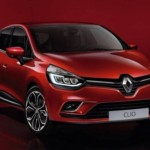


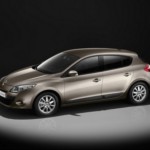
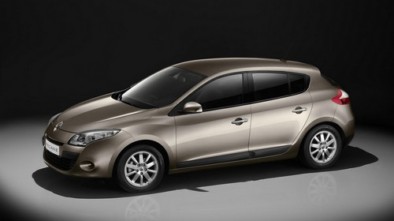
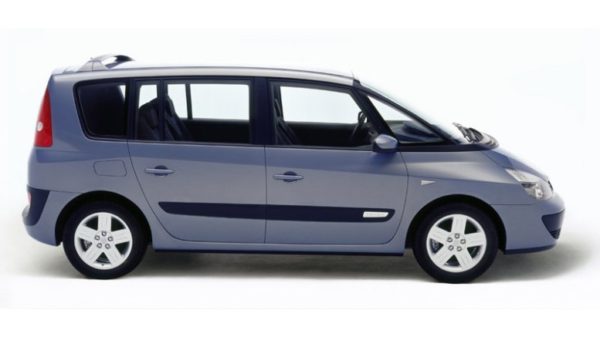
Klio 1,5 dci Delphi Nozzle and Pump Reinforced Ler Has Black Smoke When Accelerating Check Heater Burns Double Consumption Gains When Iber Turns Up To 3oooo 0btr Moment
Dear Sirs,
Used reno clio gas pedal how much does it cost.
Thank you
With respect
You have a Renault Clio 1.5Dci car engine at what price
Greeting new member of
I have a 2002 Renault Clio 1.2 petrol 43 kw and in the middle of driving and suddenly it stops receiving gas, it doesn't turn off but it won't receive gas and my light comes on. Let it be on the control panel. Did anyone have a similar problem? Thanks in advance